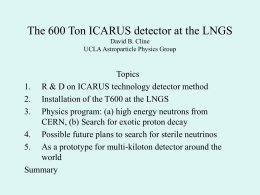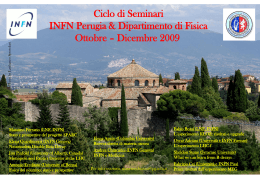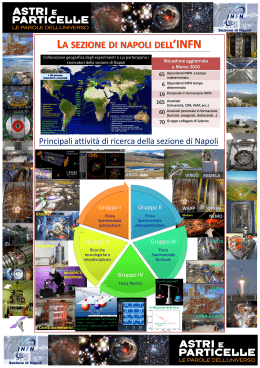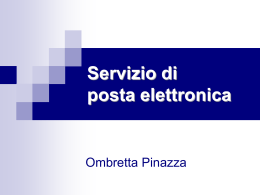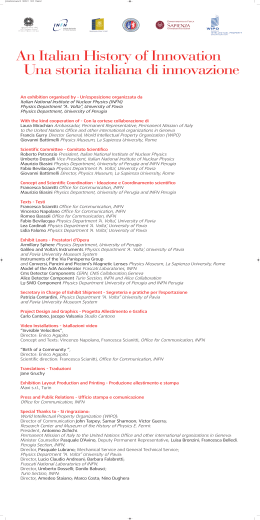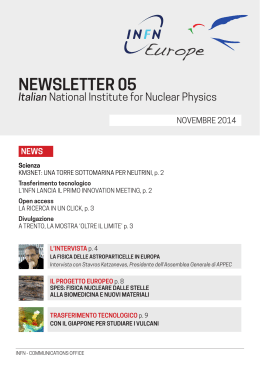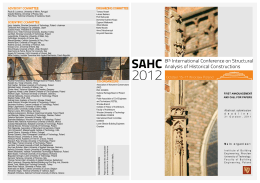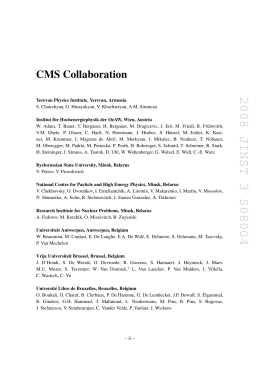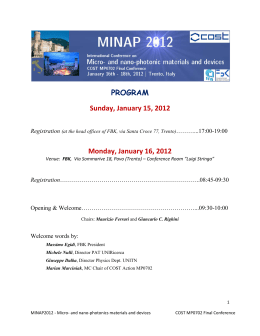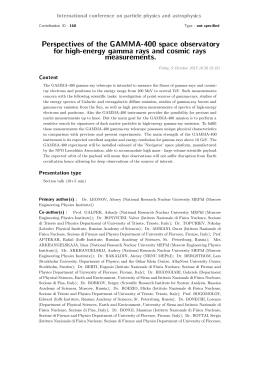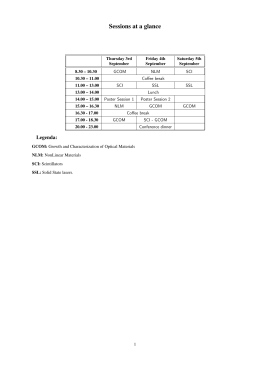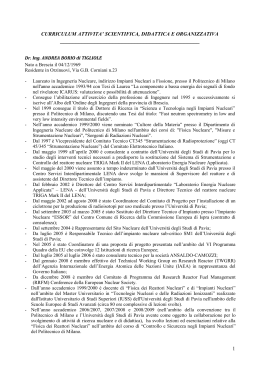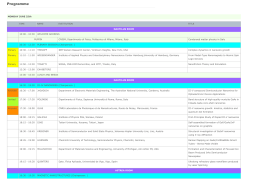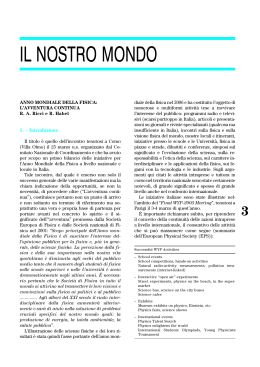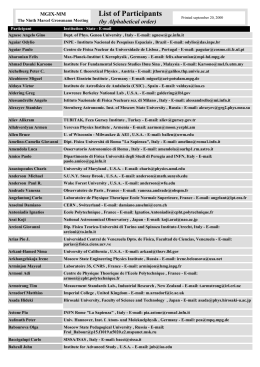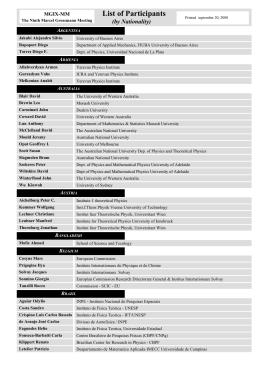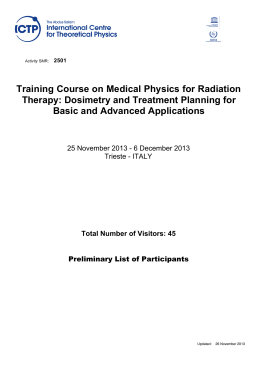The 600 Ton ICARUS detector at the LNGS David B. Cline UCLA Astroparticle Physics Group Topics 1. R & D on ICARUS technology detector method 2. Installation of the T600 at the LNGS 3. Physics program: (a) high energy neutrons from CERN, (b) Search for exotic proton decay 4. Possible future plans to search for sterile neutrinos 5. As a prototype for multi-kiloton detector around the world Summary M. Antonello, P. Aprili, N. Canci, C. Rubbia, E. Scantamburlo, E. Segreto, C. Vignoli Laboratori Nazionali del Gran Sasso dell’INFN, Assergi (AQ), Italy B. Baibussinov, M. BaldoCeolin, S. Centro, D. Dequal, C. Farnese, A. Fava, D. Gibin, A. Guglielmi, G. Meng, F. Pietropaolo, F. Varanini, S. Ventura Dipartimento di Fisica e INFN, Università di Padova, Via Marzolo 8, I-35131, Padova, Italy P. Benetti, E. Calligarich, R. Dolfini, A. Gigli Berzolari, A. Menegolli, C. Montanari, A. Rappoldi, G. L. Raselli, M. Rossella Dipartimento di Fisica Nucleare e Teorica e INFN, Università di Pavia, Via Bassi 6, I-27100, Pavia Italy F. Carbonara, A. G. Cocco, G. Fiorillo Dipartimento di Scienze Fisiche, INFN e Università Federico II, Napoli, Italy A. Cesana, P. Sala, A. Scaramelli, M. Terrani INFN, Sezione di Milano e Politecnico, Via Celoria 2, I-20123 K. Cieslik , A. Dabrowska, M. Haranczyk , D. Stefan , M. Szarska ,T. Wachala ,A. Zalewska The Henryk Niewodniczanski, Institute of Nuclear Physics, Polish Academy of Science, Krakow, Poland D. B. Cline, S. Otwinowski, H.-G. Wang, X. Yang Department of Physics and Astronomy, University of California, Los Angeles, USA A. Dermenev, S. Gninenko, M. Kirsanov INR RAS, prospekt 60-letiya Oktyabrya 7a, Moscow 117312, Russia A. Ferrari CERN, Ch1211 Geneve 23, Switzerland T. Golan , J. Sobczyk ,J. Zmuda Institute of Theoretical Physics, Wroclaw University, Wroclaw, Poland J. Holeczek ,J. Kisiel , I. Kochanek, S. Mania Institute of Physics, University of Silesia, 12 Bankowa st., 40-007 Katowice, Poland J. Lagoda , T. J. Palczewski ,P. Przewlocki ,J. Stepaniak ,R. Sulej A. Soltan Institute for Nuclear Studies, 05-400 Swierk/Otwock, Warszawa, Poland G. Mannocchi, L. Periale, P. Picchi, Laboratori Nazionali di Frascati (INFN), Via Fermi 40, I-00044, Italy P. Plonski , K. Zaremba Institute for Radioelectronics, Warsaw Univ. of Technology Pl. Politechniki 1, 00-661 Warsaw, Poland F. Sergiampietri Dipartimento di Fisica, Università di Pisa, Largo Bruno Pontecorvo 3, I-56127, Pisa, Italy The Liquid Argon Time Projection Chamber [C. Rubbia: CERN-EP/77-08 (1977)] first proposed to INFN in 1985 [ICARUS: INFN/AE-85/7] capable of providing a 3D imaging of any ionizing event (‘’electronic bubble chamber’’) with in addition: • continuously sensitive, self triggering • high granularity (~ 1 mm) • excellent calorimetric properties • particle identification (through dE/dx vs range) Electrons from ionizing track are drifted in LAr by E drift. They traverse transparent wire arrays oriented in different directions where induction signals are recorded. Finally electron charge is collected by collection plane. • Key feature: LAr purity form electro-negative molecules (O 2, H2O,C02). • Target: 0.1 ppb O2 equivalent= 3 ms lifetime (4.5 m drift @ E drift = 500 V/cm). ICARUS 9839/1274 CERN beam Candidate for a e interaction
Scarica
